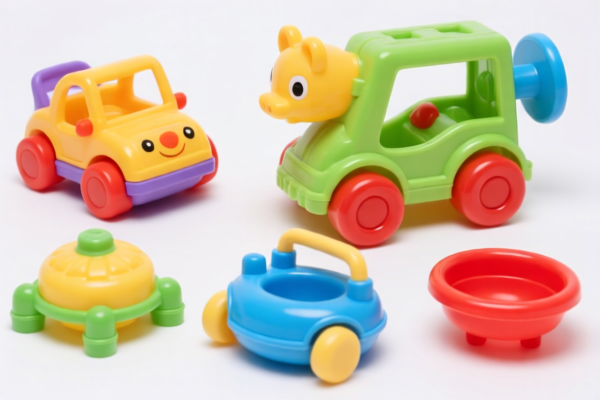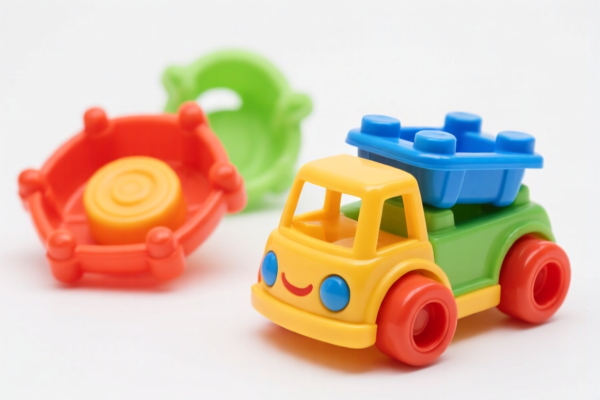| HS Code | Official Doc | Tariff Rate | Origin | Destination | Effective Date |
|---|---|---|---|---|---|
| 9503000071 | Doc | 30.0% | CN | US | 2025-05-12 |
| 9503000073 | Doc | 30.0% | CN | US | 2025-05-12 |
| 3926901000 | Doc | 40.9% | CN | US | 2025-05-12 |
| 3926909905 | Doc | 42.8% | CN | US | 2025-05-12 |
| 3924104000 | Doc | 33.4% | CN | US | 2025-05-12 |
| 3924905610 | Doc | 40.9% | CN | US | 2025-05-12 |
| 6914108000 | Doc | 64.0% | CN | US | 2025-05-12 |
| 6914908000 | Doc | 60.6% | CN | US | 2025-05-12 |
| 6911900050 | Doc | 42.9% | CN | US | 2025-05-12 |




Children's Plastic Tools
Children's plastic tools are miniature versions of common hand tools, manufactured from plastic materials, designed for use by children in play and educational settings.
Material
The primary material is typically various types of plastic, including:
- Polypropylene (PP): Common for its durability, flexibility, and resistance to chemicals.
- Polyethylene (PE): Often used for softer components or parts requiring some flexibility.
- ABS (Acrylonitrile Butadiene Styrene): Provides higher impact resistance and rigidity.
- PVC (Polyvinyl Chloride): Less common due to environmental concerns, but sometimes used for handles or specific components.
These plastics are chosen for their lightweight nature, affordability, and safety compared to metal tools. Some sets may incorporate rubber or foam for grips or cushioning.
Purpose
The primary purpose is to facilitate imaginative play, role-playing, and early childhood development. They allow children to mimic adult activities, fostering creativity, problem-solving skills, and hand-eye coordination. They also introduce basic tool concepts and promote understanding of how things are built and repaired.
Function
While resembling real tools, children's plastic tools are generally non-functional in the same way. They are designed for pretend play and do not typically possess the cutting, fastening, or shaping capabilities of their adult counterparts. Functions are simulated through design:
- Hammers: May make a sound when striking a surface.
- Screwdrivers: Often fit into pre-made holes in accompanying toy construction sets.
- Wrenches: Designed to turn toy nuts and bolts.
- Saws: Typically lack a cutting edge and are used for visual imitation.
Usage Scenarios
- Role-Playing: Children imitate builders, carpenters, mechanics, or plumbers.
- Construction Play: Used with building blocks, toy construction sets, or sandboxes.
- Educational Settings: Incorporated into preschool or kindergarten classrooms for learning about tools and trades.
- Home Play: Used in individual or group play scenarios, often in conjunction with other toys.
- Sandbox Play: Used to dig, scoop, and manipulate sand.
Common Types
- Tool Sets: The most common type, including a variety of tools in a carrying case. Sets often include hammers, screwdrivers, wrenches, pliers, saws, levels, and measuring tapes.
- Construction Benches: A workbench-style toy with integrated tool storage and often includes building components.
- Power Tool Toys: Battery-operated toys that simulate the look and sound of power tools (drills, saws, sanders), though generally lack real functionality.
- Gardening Tools: Miniature versions of gardening tools like shovels, rakes, and watering cans.
- Individual Tools: Sold separately, such as a single hammer or screwdriver.
- Themed Sets: Sets based on specific trades, such as a mechanic set or a carpenter set.
Children's plastic tools fall under articles of plastics, potentially household articles, or toys depending on their specific design and function. Here's a breakdown of relevant HS codes based on the provided information:
- 3926901000: This code covers “Other articles of plastics and articles of other materials of headings 3901 to 3914: Other: Buckets and pails”. While not directly tools, if the plastic tools are bucket- or pail-shaped, this could apply. The tax rate is currently 40.9% (3.4% basic tariff, 7.5% additional tariff, and 30.0% additional tariff after April 2, 2025).
- 3926909905: This code covers “Other articles of plastics and articles of other materials of headings 3901 to 3914: Other: Other Elastic bands made wholly of plastics”. If the tools include elastic components, this code might be relevant. The tax rate is currently 42.8% (5.3% basic tariff, 7.5% additional tariff, and 30.0% additional tariff after April 2, 2025).
- 3924104000: This code covers “Tableware, kitchenware, other household articles and hygienic or toilet articles, of plastics: Tableware and kitchenware: Other”. If the tools are designed for use in play kitchens or resemble kitchen tools, this code could apply. The tax rate is currently 33.4% (3.4% basic tariff and 30.0% additional tariff after April 2, 2025).
- 3924905610: This code covers “Tableware, kitchenware, other household articles and hygienic or toilet articles, of plastics: Other: Other Gates for confining children or pets (potentially if the tools are part of a play set designed for confinement/play areas)”. If the tools are part of a play set designed for confinement or play areas, this code might be relevant. The tax rate is currently 40.9% (3.4% basic tariff, 7.5% additional tariff, and 30.0% additional tariff after April 2, 2025).
- 9503000071: This code covers “Tricycles, scooters, pedal cars and similar wheeled toys; dollsʼ carriages; dolls, other toys; reduced-scale (“scaleˮ) models and similar recreational models, working or not; puzzles of all kinds; parts and accessories thereof “Childrenʼs productsˮ as defined in 15 U.S.C. § 2052: Other: Labeled or determined by importer as intended for use by persons: Under 3 years of age”. If the tools are specifically designed for children under 3 years of age, this code applies. The tax rate is currently 30.0% (0.0% basic tariff, 0.0% additional tariff, and 30.0% additional tariff after April 2, 2025).
- 9503000073: This code covers “Tricycles, scooters, pedal cars and similar wheeled toys; dollsʼ carriages; dolls, other toys; reduced-scale (“scaleˮ) models and similar recreational models, working or not; puzzles of all kinds; parts and accessories thereof “Childrenʼs productsˮ as defined in 15 U.S.C. § 2052: Other: Labeled or determined by importer as intended for use by persons: 3 to 12 years of age”. If the tools are specifically designed for children between 3 and 12 years of age, this code applies. The tax rate is currently 30.0% (0.0% basic tariff, 0.0% additional tariff, and 30.0% additional tariff after April 2, 2025).
Important Note: The classification of these tools will depend on their specific characteristics and intended use. It is crucial to accurately determine the age range for which the tools are intended, as this impacts the applicable HS code (9503000071 vs. 9503000073). These products are defined as “Children’s productsˮ as defined in 15 U.S.C. § 2052.
Customer Reviews
Great resource for anyone dealing with plastic builder’s doors. The HS Code and tariff details were spot on.
I found the information on the 5% tariff rate very useful, but the layout could be a bit more organized.
The HS Code section was very helpful. I was exporting for the first time and this made it easier.
The page had all the necessary trade details, but I wish there were more examples of similar products.
I really appreciated the detailed tariff information for the US market. It saved me time and confusion.